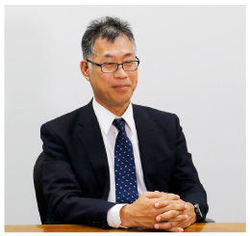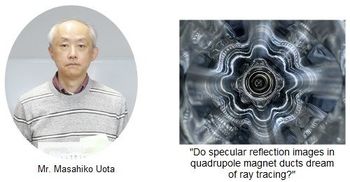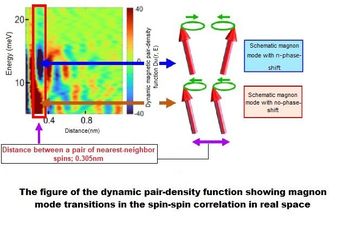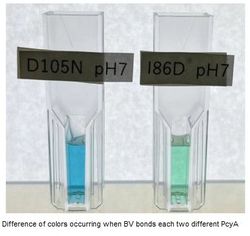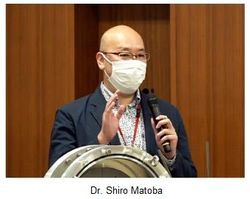J-PARC News February 2023 (Issue #213)
■Message from Director of J-PARC Center
I would like to wish everyone a happy new year.
During the last year, we could see moves to resume socioeconomic activities "with coronavirus" proceeded both domestically and internationally despite major waves of coronavirus outbreaks with no signs of convergence.
Last year, the RCS/MLF succeeded in providing a stable beam at the intensity of 830 kW since April with an extremely high operating efficiency of about 95%. Various results have come from the MLF experiments, including the results of elemental composition analysis of samples from the asteroid Ryugu, brought back by the asteroid explorer Hayabusa-2, and the development of a fuel cell. After years of work at MR, construction work to increase the beam power was completed by the end of FY2021. The reborn MR is now being commissioned, and this year high-intensity beam operation using the new MR will finally begin full-scale operation.
We have gradually resumed travels to and from overseas, and I was thrilled to welcome our colleagues from abroad back to the J-PARC site. Experiences through international collaboration and joint research with researchers from around the world are crucial for cutting-edge research at J-PARC and elsewhere in the world. I believe that the experience of "sharing various experiences" will lead to long-term cooperative relationships and, eventually, to international peace.
Let’s make the new year a better one.
January 2023
Takashi Kobayashi, Director, J-PARC Center
■Win Science Award at 5th Science Photo Contest
Mr. Masahiko Uota of Accelerator Section V, Accelerator Divison, whose photo work was entitled "Do specular reflection images in quadrupole magnet ducts dream of ray tracing?", won the Science Award in the General Category at the 5th Science Photo Contest sponsored by the Union of Organization on Science and Technology (UOST) and co-sponsored by the Ministry of Education, Culture, Sports, Science, and Technology. UOST promotes projects intending to contribute to promoting and disseminating science and technology in Japan. As a part of such activities, the submission of the photo works was called for under the theme, "Discover the wonders and surprises of science around you," this year.
This work won the Grand Prize in the J-PARC Photo Contest 2022.
■World's First Direct Real Space Observation of Spin Fluctuation
- Elucidating Nanometer-Size Magnetism to Improve Functions of Ultra-Compact Magnetic Devices
A research group from JAEA, Comprehensive Research Organization for Science and Society (CROSS), and J-PARC has succeeded in directly observing real space spin fluctuations of electrons using a newly developed analysis program for the first time in the world. This makes it possible to directly observe spin fluctuations in small nanometer-sized magnetic materials, which has been difficult with other methods.
The performance of a magnet is related to the spin fluctuation of the electrons. Until now, fluctuations have been measured by neutron scattering, which is sensitive to spin. However, direct real space observation of spin fluctuations has been difficult due to a lack of signal intensity. The research team developed a new analysis program based on the Fourier transform, which can analyze low signal intensity. 0.6 MW neutron beams were irradiated onto a magnetic powder sample of FeTiO3 using the 4D-space access neutron spectrometer "4SEASONS" at MLF in J-PARC, and the sample was analyzed by this program. The team observed two spin rotation modes, one in the same direction and the other in the opposite direction, which were separated by energy with sub-nanometer resolution.
These results enable researchers to directly study spin fluctuations even in unknown materials. The spin rotation directions and their interaction strengths can now be determined. Furthermore, this analysis can be applied not only to nanomagnetic materials but also to various magnetic materials, such as amorphous magnetic materials. In the future, the development of nanometer-sized ultra-compact magnetic materials is expected to be accelerated using this technique.
■Absorption Ability of Solar Energy Changes with Single Hydrogen Atom!
World's First Successful Visualization of Hydrogen Atoms Whose Color of Pigment changes in Protein
- Combination of Neutron Crystallography and Quantum Chemical Analysis Elucidates Cause of Difference between Green and Blue of Pigment -
A joint research team of Ibaraki University, University of Miyazaki, Kurume University, National Institute of Technology, Kurume College of Technology, Kurume College, and Technical University Munich in German has visualized for the first time in the world that the color difference that appears when a specific pigment, a basis of photosynthetic pigments, bonds to a protein (enzyme) is caused by a number of the difference of a single hydrogen atom.
The photosynthetic organism, cyanobacteria, contains several types of pigments necessary for photosynthesis. One of them, phycocyanobilin, is produced by an enzyme (PcyA) 's reduction of two biliverdin (BV) sites in the organism. Previous studies have shown that mutating one of the amino acids in PcyA to another changed the color after BV bonding. Still, because the hydrogen atoms in the protein cannot be visualized, the cause of this change has not been elucidated.
Therefore, in this study, the structures of two inactive mutant enzymes with different colors from the wild type, which appeared due to the bonding of BV, were analyzed by neutron beams. For this analysis, the IBARAKI Biological Crystal Diffractometer (iBiX) in the MLF at J-PARC and the single crystal diffractometer for biological macromolecules in the research reactor in Munich were used. As a result, it was visualized for the first time that the number of hydrogen atoms in the pigment differs by one. In addition, quantum chemical calculations revealed that the protonation state of the BV and its surrounding residues determines the color difference.
This achievement is expected to promote artificial photosynthesis by efficiently producing pigments that absorb light and transmit signals and energy.
■J-PARC Hello Science
Artisans' Techniques in Making Elementary Particles - From Site of Muon Production Targets -" (December 23)
Dr. Shiro Matoba of the Material and Life Science Division was a lecturer at "Hello Science" in December. He introduced the technique of the rotating target that produces the world's most intense muon beam while withstanding high-intensity proton beam irradiation.
The muon production target at J-PARC must be made of a material with resistance against high heat, radiation, and high thermal shock due to low activation. A fixed target system was used from 2008 to 2014. To absorb the significant difference in thermal expansion coefficient between copper and graphite, titanium was inserted to achieve stable operation for five years without a single replacement. However, the graphite becomes fragile due to radiation damage when only a portion of graphite is irradiated with high-intensity proton beams. Later, in preparation for the higher beam intensity, a rotating target system was adopted to disperse the heat generated by the beam and the irradiation damage.
The first rotating target has been in stable operation for five years since 2014, and the second one has been in stable operation since 2019 to the present. The rotating target has adopted tungsten disulfide as a bearing lubricant to extend its service life. This technology was also provided to the Paul Scherrer Institute in Switzerland. The rotating target, which used to be replaced about three times a year, has been in stable operation for one year.
Furthermore, the temperature of the rotating target was successfully measured for the first time in the world, and it was confirmed that the calculated and measured values were significantly the same. This confirmation of the accuracy of the simulations has led to an evaluation of how much the proton beam intensity can be increased in the future.
■Experimental Workshop "Let's Make Spinning Top Spinning on Tilted!"
-Looking at World of Accelerator Research through Spinning Tops" at Tama Rokuto Science Museum (January 15, Nishitokyo city)
Experimental Workshop "Let's Make Spinning Top Spinning on Tilted!"
-Looking at World of Accelerator Research through Spinning Tops" at Tama Rokuto Science Museum (January 15, Nishitokyo city)
On January 15, J-PARC center co-hosted with KEK and Tamarokuto Science Center a science experiment event to make a spinning top that spins while tilted and to investigate the relationship between electricity and magnets. The event was held for students from 4th graders to high school. It was led by Dr. Masashi Otani from the Accelerator Division of the J-PARC Center and Ms. Yuka Ibaraki from Nagoya University.
Nine students participated in both the morning and afternoon classes. They enthusiastically engaged in experiments on magnets and electric currents using a directional magnet, observation of precessional motion using a gyroscope, and creating a state in which no precessional motion occurred by shifting the center of gravity using a handmade spinning top. The observation of precessional motion was particularly enticing, not only for the children but also for the adults who accompanied them. Through these experiments, the children learned that elementary particles have properties similar to those of spinning tops and about elementary particles' unique rotation (spin). It seems that the participants were able to experience the fun of science.
■Sanpo-michi #31 -Forest in Muramatsu-
Looking from the roof of the J-PARC research building, you can see that the research facilities are sparsely built amidst a forest of black pine trees that covers the entire area. The black pine is used for New Year's decorations and designated as the tree of Tokai Village. Legend has it that once upon a time, this area was a duneland where sandstorms raged for days, burying villages on end. The villagers of that time planted black pine trees here and used them as windbreak forests and trees planted to prevent the erosion of sand.
When J-PARC was built, large-scale replanting work was conducted to preserve these traditional black pine trees. We held two tree-planting activities under the guidance of the late Dr. Akira Miyawaki, Professor Emeritus of Yokohama National University. According to Dr. Miyawaki, the black pine is a pioneer that first grows on gravelly sandy soil. Shade trees that require less sunlight are already gradually sprouting among the sun trees, and in the future, this area will be home to a wide variety of trees.
We hope that J-PARC will benefit the world with the results as a pioneer in science and technology.

